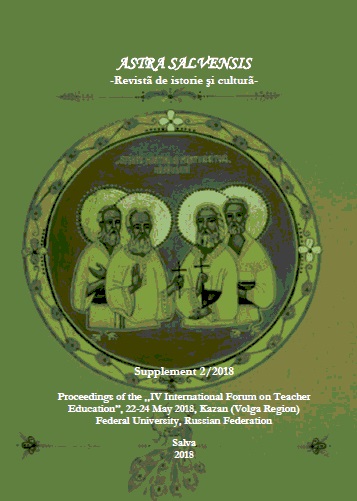MIND MAPPING IN EDUCATION: ITS USAGE IN PSYCHOLOGISTS‟ TRAINING AS EXEMPLIFIED BY THE EDUCATIONAL MODULE «ATTENTION CHARACTERISTICS»
MIND MAPPING IN EDUCATION: ITS USAGE IN PSYCHOLOGISTS‟ TRAINING AS EXEMPLIFIED BY THE EDUCATIONAL MODULE «ATTENTION CHARACTERISTICS»
Author(s): Elisabeth BrunnerSubject(s): Social Sciences
Published by: Asociaţiunea Transilvană pentru Literatura Română şi Cultura Poporului Român - ASTRA
Keywords: mind map; psychologists‘ training; lecture presentation; attention characteristics; classification;
Summary/Abstract: Timeliness of this work is determined by the necessity to improve the educational process, to introduce to students and researchers a methodology of effective processing and systematization of text based content. Taking into consideration the vast bulk of accumulated theoretical and empirical knowledge on the psychology of attention, the timeliness of this work is determined also by the need to reconsider this material, to bring in adequate corrective amendments as well as to refine the taxonomy of attentional characteristics. One of the best methods for handling such problems is the practice of mind mapping (MMing), which is an effective way of presentation, connection and compression of thoughts and information. Our research target is the usage of MMing for the content analysis of psychological texts as exemplified by the educational module «Attention characteristics». Our dominant approach to the investigation into this problem is mind mapping. The results of the research presented in the paper enable us, on one hand, to take a fresh look at the issue of the classification of the attentional characteristics and, on the other hand, to provide students and researchers with an example of correct analysis, synthesis and systematization of abundant textual information flow. The main outcomes of our research are the following: (1) the classification of the attentional characteristics upon the criterion of the number of the objects of attention and its focusing on the different number of the objects of attention, (2) the classification upon the criteria of temporality and static/dynamic character of attention, as well as (3) the classification upon the criterion of the possibility of the voluntary regulation of the attentional characteristics. Practical relevance of the research results presented in the paper, lies (1) in the demonstration of the mind mapping potential for the content-analysis of textual material (as exemplified with the classification of the attentional characteristics), (2) in the introducing of the template, which can help the educator not only make easier the explanation of the topics of the educational module ―Cognitive processes‖ in the course of General psychology, but also provide students with clear instruction as to the material for their self-studying.
Journal: Astra Salvensis - revista de istorie si cultura
- Issue Year: VI/2018
- Issue No: Supp 2
- Page Range: 239-260
- Page Count: 22
- Language: English

